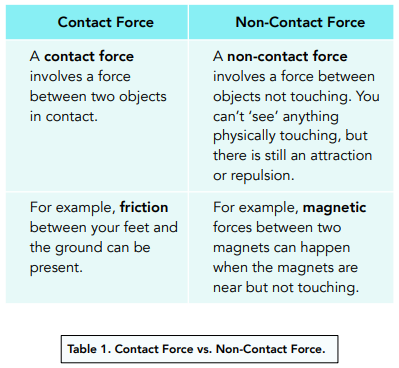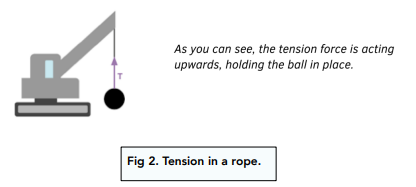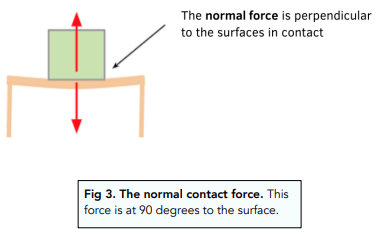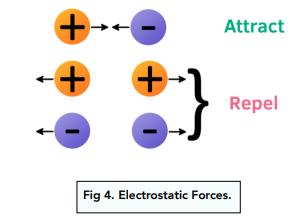Types of Forces (GCSE Physics)
Types of Forces
Contact and Non-Contact Forces
A force is a push or pull which occurs between two objects.
Forces can be either contact or non-contact.
- A contact force can push apart two objects that were touching. Imagine trying to jump off the ground. When you bend your knees to push down, the ground is simultaneously pushing upwards against you. The forces are equal and opposite, but since the ground can’t move, you get propelled upwards into the air.

Examples of Contact Forces
For exams, we need to learn 3 examples of contact forces:
- Friction occurs when two surfaces move across each other. A frictional force will oppose motion, preventing two surfaces from sliding over each other.
- Air resistance is a type of frictional force. Air opposes the motion of an object, leading to air resistance. Some call it the ‘friction of air’. The faster the object is moving, the more air resistance it will experience.
- Tension occurs when objects are stretched. Tension usually happens in ropes, cables, strings and chains. When an object is suspended from a string, there are two forces involved. One is a force acting downwards due to the object. The other is a tension force acting upwards in the string to keep everything in place, as shown in Fig 2.

- Normal contact force (or reaction force) occurs when objects are touching at rest. When a plate rests on a table, it will experience a reaction force. This force can be labelled on a diagram, using an arrow going up perpendicular to the table!

Examples of Non-Contact Forces
For exams, we need to learn 3 examples of non-contact force.
- Gravitational force is an attractive force. Gravitational force can pull planets together in the Solar System, and can also make objects stay on the surface of the Earth. Gravitational force helps us to define the weight of an object, rather than just the mass.
- Electrostatic forces occur between charges. Similar to magnetic forces, electrostatic forces between opposite charges will lead to attraction, whilst forces between similar charges will lead to repulsion.
- Magnetic forces occur due to electromagnetic forces. When a charged particle moves in a magnetic field, it will experience a force called a magnetic force. This is related to the motor effect.






Still got a question? Leave a comment
Leave a comment